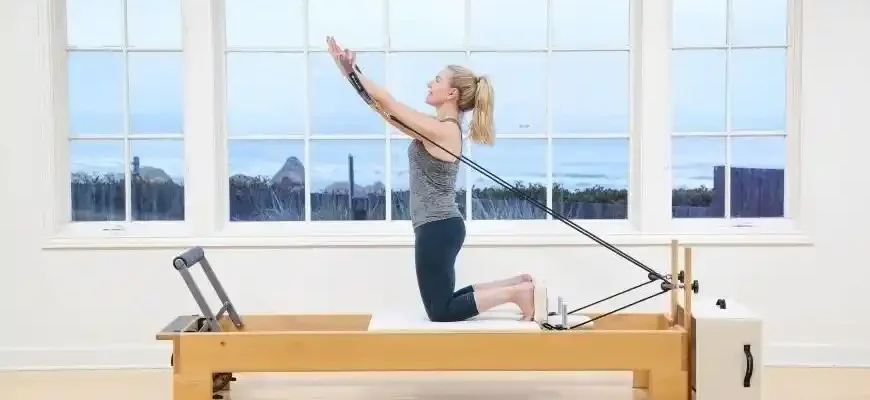Pilates is one of those fitness practices that, when done right, can transform your body, improve your posture, and make you feel like you’re walking on air. It’s low-impact but packs a punch, which is why so many people, including those over 50 (like me), turn to it for better mobility and core strength.
So, you’re thinking about starting Pilates at home? You’re not alone. According to a survey by the American Council on Exercise, Pilates has become a popular choice for at-home workouts, with a marked increase in participation during the COVID-19 pandemic. Now, let’s dig into how you can get started on this fitness journey, the science behind it, common challenges, and how to avoid injury—all from the perspective of someone who’s done their homework and has a little life experience under their belt.
What is Pilates?
Pilates, developed by Joseph Pilates in the early 20th century, focuses on strengthening the muscles of the body, especially the core, while improving flexibility and balance. It’s a blend of controlled movements, precise posture, and breathing that aims to enhance body awareness. It’s often recommended for people with back issues, poor posture, or those looking to strengthen muscles without overstraining the joints. There are two primary types of Pilates: mat Pilates, which you can do with just a mat, and reformer Pilates, which involves a specialized machine.
At home, we’ll focus mainly on mat Pilates, which is more accessible and requires minimal equipment.
Why Do Pilates at Home?
The benefits of Pilates are well-documented. Research from the National Institutes of Health (NIH) has shown that regular Pilates practice can improve core strength, flexibility, and muscle endurance. It’s also been linked to better posture and reduced pain in the lower back, hips, and neck.
If you’re someone in their 50s or older, Pilates can be especially beneficial for maintaining functional fitness, preventing falls, and managing chronic pain (especially back pain, which affects over 80% of adults at some point in their life). You can expect to see noticeable improvements in your posture, coordination, and overall strength—without the high-impact wear and tear that comes with other fitness regimens.
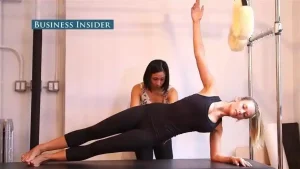
That being said, there are some common pitfalls that you’ll need to be aware of. I’ll talk more about those later, but it’s essential to start slow and listen to your body.
Getting Started: What You’ll Need
The beauty of Pilates is that it’s incredibly accessible. You don’t need much equipment to get started—just a few essentials:
- A Pilates mat: It’s thicker than a yoga mat, offering extra cushioning for your spine and joints. Look for one that’s at least 1/4 inch thick.
- Comfortable workout clothes: Pilates is all about controlled movements, so you want to wear something that stretches and moves with your body. Avoid baggy clothes that might get in the way.
- Props (optional): If you want to add variety, you can use small props like a Pilates ring (or magic circle), resistance bands, or light dumbbells. However, none of these are strictly necessary for beginners.
Step-by-Step: How to Start Pilates at Home
- Warm Up: Like any good workout, you’ll want to start with a warm-up. A few minutes of gentle stretching or breathing exercises will get the blood flowing and help you avoid injury. If you’re unsure where to start, try a few gentle spinal rotations and deep breathing exercises.
- Learn the Basics: Pilates is all about alignment, breath, and controlled movement. Familiarize yourself with key exercises like the Hundred, Roll-Up, Leg Circles, and Plank. There are plenty of free videos available online, so don’t hesitate to check out a few before diving in.
- Practice Controlled Movements: It’s tempting to rush through exercises, but Pilates is about quality over quantity. Focus on precision and slow, deliberate movements. You’ll get more out of each repetition that way.
- Breathing: One of the foundational principles of Pilates is learning to breathe properly. You’ll often exhale as you engage the muscles (especially the core) and inhale to reset. Deep, diaphragmatic breathing helps you maintain control and stability.
- Cool Down: After your workout, take a few minutes to stretch and relax. The cool-down helps to prevent muscle stiffness and allows your body to return to a resting state.
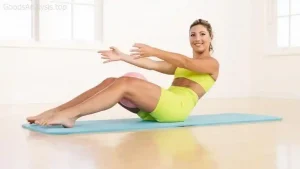
What to Watch Out For: Common Pitfalls
Like any exercise, Pilates comes with its own set of challenges, and it’s easy to make mistakes if you’re not paying attention. Here are a few common issues I’ve seen in myself and others, plus tips to help:
- Not engaging the core: The core is the heart of Pilates. It’s easy to forget to engage your abdominals, especially in exercises like the Roll-Up or Plank. To correct this, think about drawing your belly button toward your spine, and always focus on keeping your abdominals active during each movement.
- Overextending: Don’t go too deep into stretches or movements if you’re not ready. Pilates is about controlled movements, not pushing your limits. Always listen to your body and back off if something feels too intense.
- Bad posture: Pilates is designed to improve your posture, but you must start with good posture. Make sure your spine is aligned throughout each exercise, and if you need to, check in with a mirror. Over time, you’ll get better at finding your neutral spine naturally.
- Trying to do too much, too soon: It’s tempting to push yourself hard, but slow and steady wins the race with Pilates. If you feel any pain (not to be confused with muscle fatigue), stop and reassess. It’s better to start small and build gradually than to overdo it and risk injury.
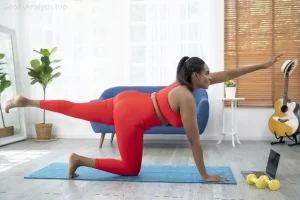
Who Should NOT Do Pilates at Home?
Pilates is generally safe for most people, but if you have certain medical conditions, you might need to consult a healthcare provider before starting. For example:
- Osteoporosis: While Pilates can help with bone health, certain movements might increase the risk of fractures in people with advanced osteoporosis.
- Recent surgery: If you’ve had a major surgery recently, you should wait until your doctor gives you the green light to begin exercises like Pilates.
If you’re uncertain, it’s always a good idea to work with a certified instructor in person, even just for a few sessions, to ensure you’re practicing correctly.
Testimonials: What People Are Saying About Doing Pilates at Home
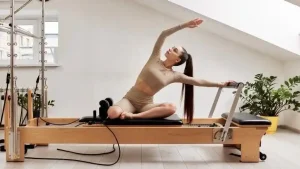
Here are some diverse opinions on Pilates, based on real experiences:
- Sarah (USA, 65): “I started Pilates to improve my posture and reduce the back pain that had been bothering me for years. After about two months, I noticed a huge improvement in my flexibility and energy levels. I do a quick 20-minute routine three times a week, and I’m hooked!”
- Carlos (Brazil, 55): “Pilates at home has been a game-changer. I used to do weight training, but it was hard on my joints. Pilates gives me strength without the wear and tear. I love that I can do it on my own time, without the gym hassle.”
- Yumi (Japan, 48): “As a busy working mom, finding time for fitness was a challenge. Pilates fits into my day, and I feel so much stronger and more centered. The breathing techniques have even helped with stress management.”
- Tariq (Egypt, 42): “I always thought Pilates was just for women, but I was wrong. I’ve been doing it for six months now, and I feel more flexible, less stiff, and more aware of my body. I’m definitely in it for the long run.”
- Maria (Italy, 57): “I’ve been practicing Pilates for over 10 years now, mostly at home. It’s kept me in good shape and helped with my posture, which is crucial as I get older. I highly recommend it to anyone who wants to stay fit without pounding their joints.”
Final Thoughts
Pilates at home can be a rewarding, effective way to stay fit, especially for those over 50 who are looking for low-impact exercise that strengthens both the body and the mind. Just remember to start slow, be mindful of your movements, and don’t hesitate to seek professional advice if you have any doubts.
You’ve got this—your future, stronger self will thank you.

